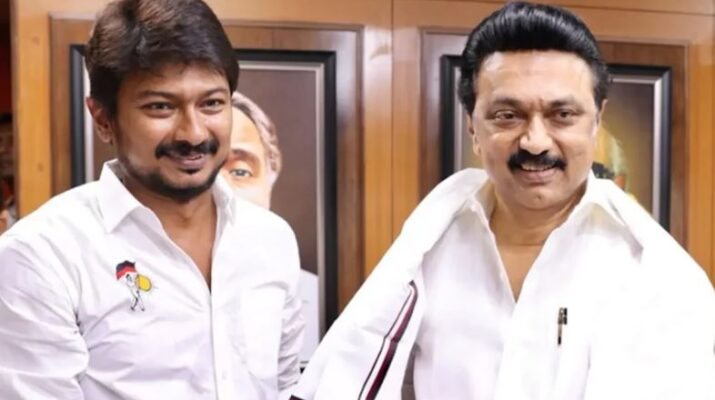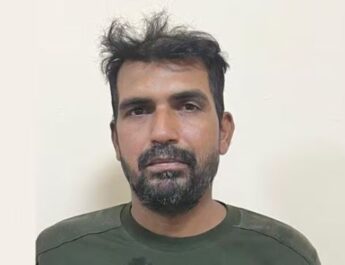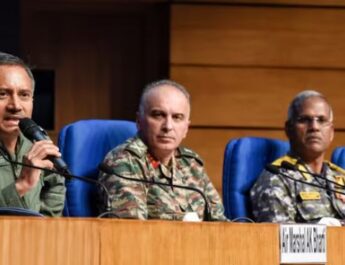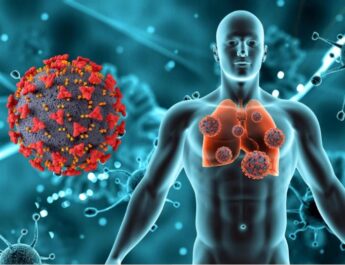South India has long been the most Hindu and Vedic part of India in terms of its culture and way of life. By South India, we mean the states of Tamil Nadu, Kerala, Karnataka, Andhra Pradesh and Telangana. South India has the largest, oldest, most numerous and most visited Hindu temples, especially in Tamil Nadu, which are not simply museum pieces, but centres of an active and devoted community.
Vedic culture is most studied and practised in southern India, including yoga, Vedanta, Ayurveda, Vedic astrology, Vastu, Indian classical music and dance, with Sanskrit stotras and Vedic chants. The three main Vedantic lineages and Acharyas represented throughout India, Advaita and Shankaracharya, Vishtadvaita and Ramanumujacharya, Dvaita and Madhvacharya, originated and still reside in southern India. The most important temples in the Himalayas, such as Char Dham, are headed by priestly families from South India.
Increasing political contradictions for Hindus in South India
Yet despite the prevalence of Vedic practices in South India, there is a dangerous contradiction that threatens Hindus in the region, a new assault on their great traditions that have so far endured for millennia.
At the political level, South Indians rarely vote to defend their Hindu culture, either in state or national elections. They rarely vote to protect their human and social rights as Hindus. South India is dominated by regional political influences that lack a national vision and many of which are staunchly anti-Hindu, such as the Communists in Kerala and the DMK in Tamil Nadu.
Today, communist influence in India (which still has not renounced Stalin or Mao) is felt primarily in southern India. In addition, there are numerous proselytising activities against Hindus, both Christian and Islamic, in southern India. Islamic terrorist groups such as the PFI are most active in southern India.
Christian missionaries have attempted to subvert South Indian Hindu culture by creating their own Christian bhajans, Christian Bharatnatyam, and even Christian yoga. Some churches are modelled after Hindu temples and perform aaratis. Christian priests wear saffron robes or rudraksha malas. Missionaries have attempted to infiltrate Hindu holy sites and promote conversion, even to the most sacred site of Hinduism at Tirupati.
Aggression of anti-Hindu ‘Stalinism’
This anti-Hindu influence in South India has reached such a level that an eminent DMK leader like Udhaynidhi Stalin, with the support of his father, the Chief Minister of Tamil Nadu ( MK ), can loudly preach the elimination of Hinduism/Sanatana Dharma by condemning it like a dangerous disease and proclaiming that it is necessary to eradicate Sanatana Dharma for the sake of human equality and social progress as if it has no merit at all. Unfortunately, such a brazen call to harm Hindus and disrupt their way of life is ignored or downplayed, while such a call against other religious communities in India would have led to national and international outrage.
This DMK, which calls itself a Dravidian party, has in reality sought to suppress and destroy Dravidian culture, which has been largely Hindu and Vedic since the dawn of its long history. Even in the ancient Matsya Purana, it is said that Manu as a flood figure was from Kerala.
DMK denies the great Hindu kingdoms, dynasties and temple culture of South India, its extraordinary art, its sophisticated philosophies, its profound Vedic sciences and its yogic spirituality. There is little traditionally Dravidian about the DMK, except perhaps their Sanskrit names, which emphasise their own Hindu family past, which they are trying to erase.
The DMK’s Dravidian politics are not Indian, Bharati, or traditional, but an extension of European nationalism, where the various linguistic zones of Europe, such as Germany or France, wanted separate countries defined according to Western politics of right and left. Although the DMK claims to be atheists and rationalists, it is Hindu traditions that it denounces
The DMK’s Dravidian politics is not Indian, Bharati, or traditional, but an extension of European nationalism in which the various linguistic zones of Europe, such as Germany or France, wanted separate countries defined according to Western politics of right and left. Although the DMK claims to be atheists and rationalists, it is the Hindu traditions it criticises and maligns, not the others. Their main enemies are the Brahmins, not the colonial rulers and their prejudices, which they seem to share.
Periyar, the DMK’s role model, called for a day of mourning for the Tamils on the occasion of India’s independence because they had not been given a state of their own alongside India. He also supported a separate state for Pakistan and advocated the partition of India. The DMK clearly began as an anti-India party, an anti-Bharat party, and thus, of course, an anti-Sanatana Dharma party, and it has maintained this divisive mentality to this day.
For them, the dictator Stalin remains a role model to be named after, not one of the leaders of the Indian independence movement or the great gurus of Tamil Nadu.
The Challenge of the Looming Danger
The abandonment of Hinduism’s spiritual and cultural influence on politics has ceded the political field in southern India and its forces to leftists, Christians, and Muslims who are more politically active, better organised, and better funded. This has resulted in Hindus in South India being misrepresented, marginalised and oppressed, their political voice dwindling and their social rights diminishing. Hindu temples remain under state control and dispossession. In public education, Hinduism is portrayed in a negative light as regressive, while anti-Hindu groups are seen in a positive light as progressive, continuing the anti-Hindu colonial agenda in India.
This Hindu phobia is evident in communist-ruled Kerala, as the problem of the Sabarimala temple shows. Overall, Hindus in Kerala are marginalised and can be attacked if they express themselves politically. They may prefer to avoid publicity at the political level to protect themselves and their families. At Communist political rallies in Kerala, one sees images of Marx, Engels, Lenin, Stalin, Mao, and even Che Guevara, figures who propagated violent revolutions and genocide. The DMK’s anti-Brahmanism is similar to the European anti-Semitic movements that led to the oppression and genocide of the Jews.
Even the Congress Party in Tamil Nadu has submitted to the DMK, being a subordinate part of its alliance and accepting or defending its anti-India propaganda. In Andhra Pradesh, Jagan Mohan Reddy and his YSR Congress are influenced by Christian missionaries and even receive direct financial support.
Fortunately, to counter this danger, a new Hindu resistance is emerging in southern India, although it is still in its early stages. Young Hindu leaders in particular, such as K Annamalai in Tamil Nadu and Tejasvi Surya in Karnataka, are committed to a new Bharatiya activism. At the national level, Prime Minister Narendra Modi has honoured the traditional culture of South India with the Statue of Equality in Hyderabad, dedicated to Ramanujacharya’s ideas on equality, and with tributes to Adi Shankara’s birthplace in Kerala and a visit to Udupi, where he also honoured the Madhva lineage.
In conclusion, Hindus in South India must realise that their vote is crucial in this democratic political era where political influence is necessary for any social respect. Those who do not vote for those who support them doom themselves to be ruled by those who oppose them. Moreover, Hindus must challenge the anti-India media in South India.
This call for a new political consciousness is not a call for Hindus to oppress anyone, as will probably be maligned, but for Hindus to have their proper representation in history, their human, legal, and religious rights, and the freedom to live a Hindu way of life as their ancestors did. It is very strange that Hindus are threatened in India with its Hindu majority and Hindu/Bharatiya past. However, it is a real problem that needs to be addressed not only for the human rights of Hindus but also for the preservation of the cultural traditions of South India in all their diversity and splendour, which are among the greatest and oldest cultural heritages in the world.




